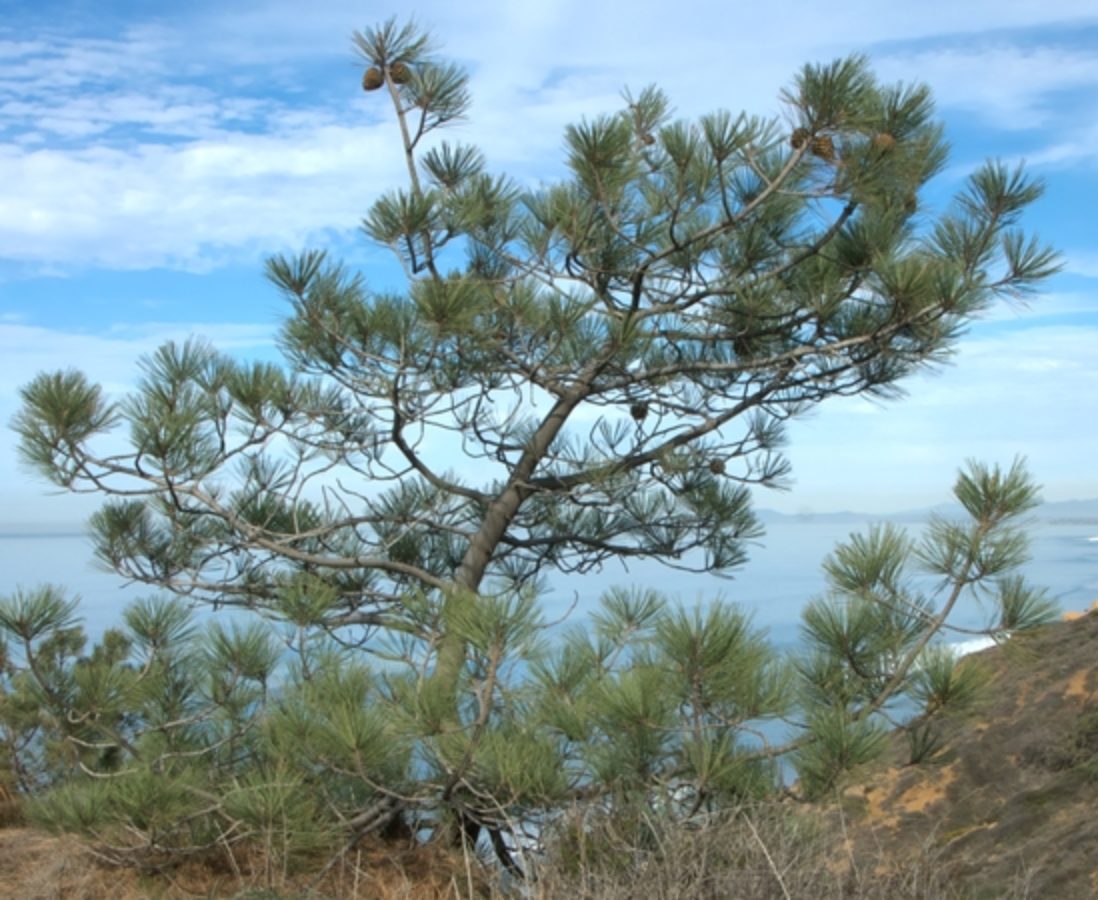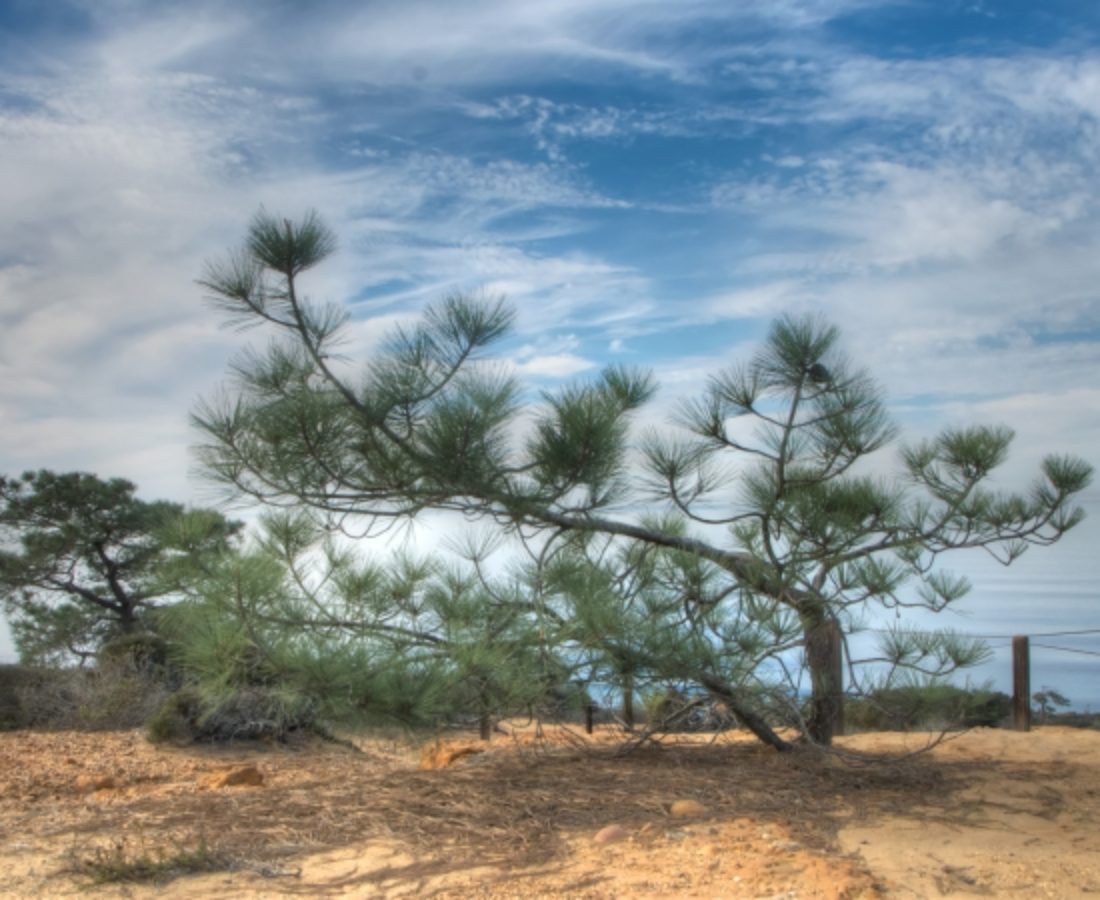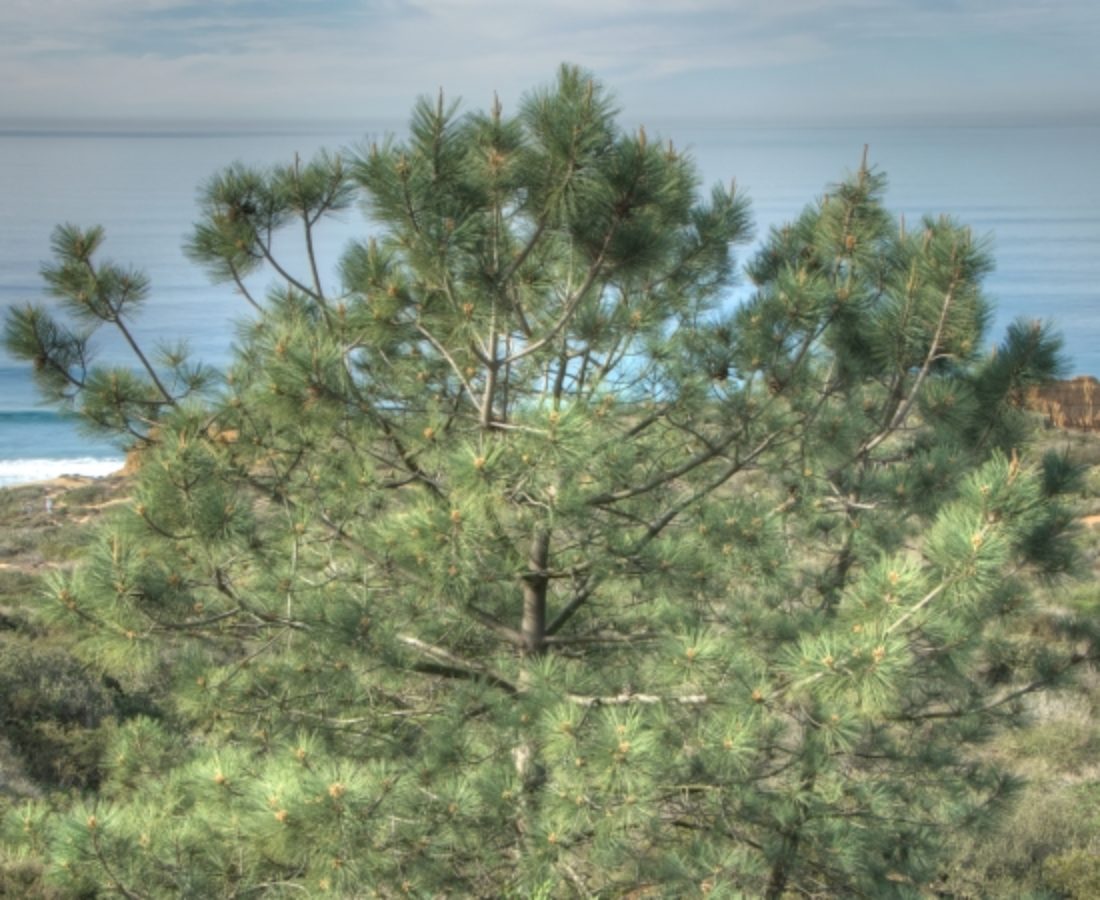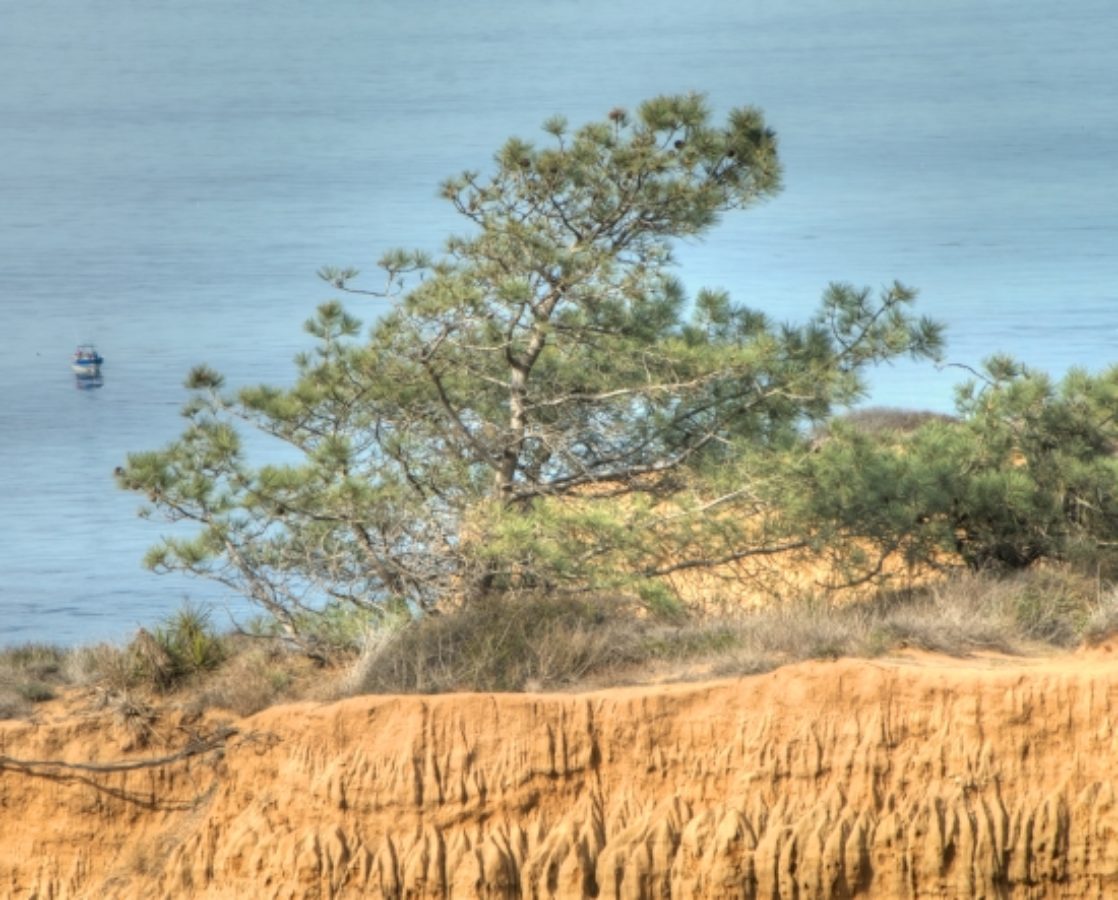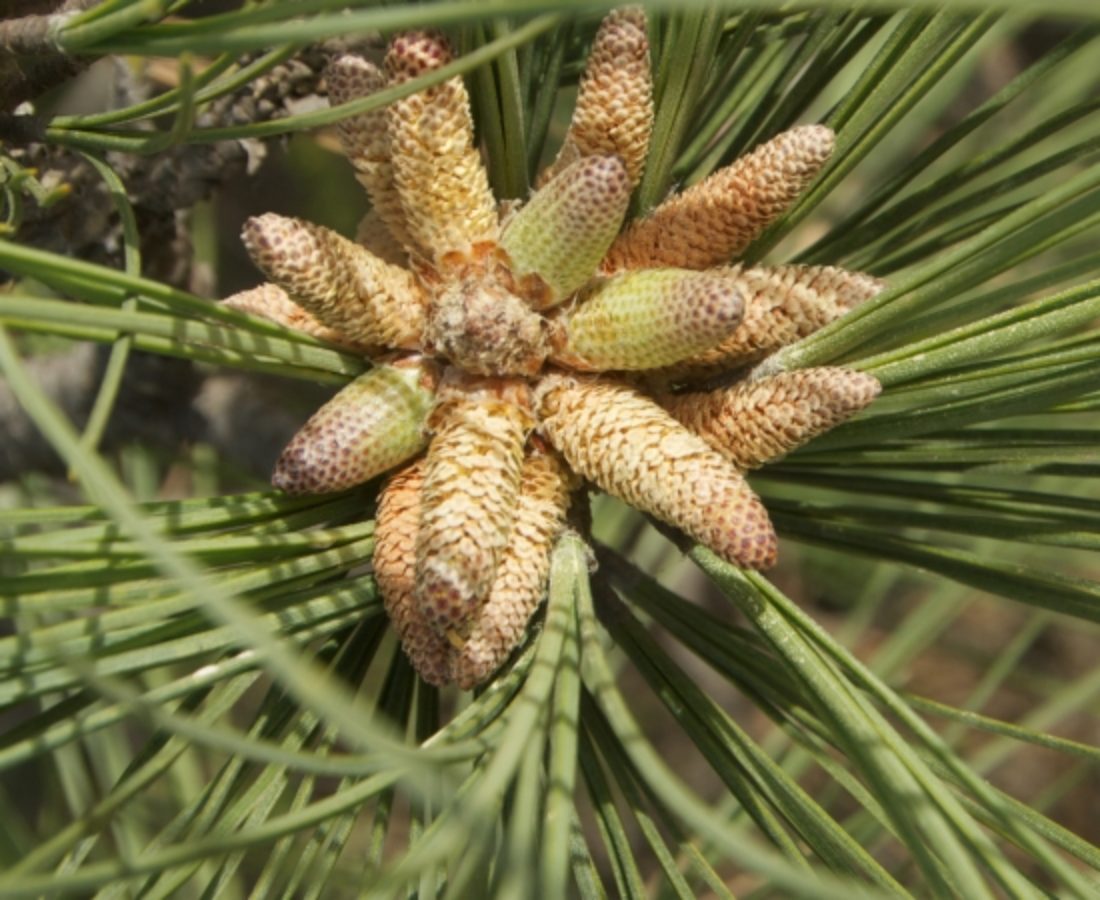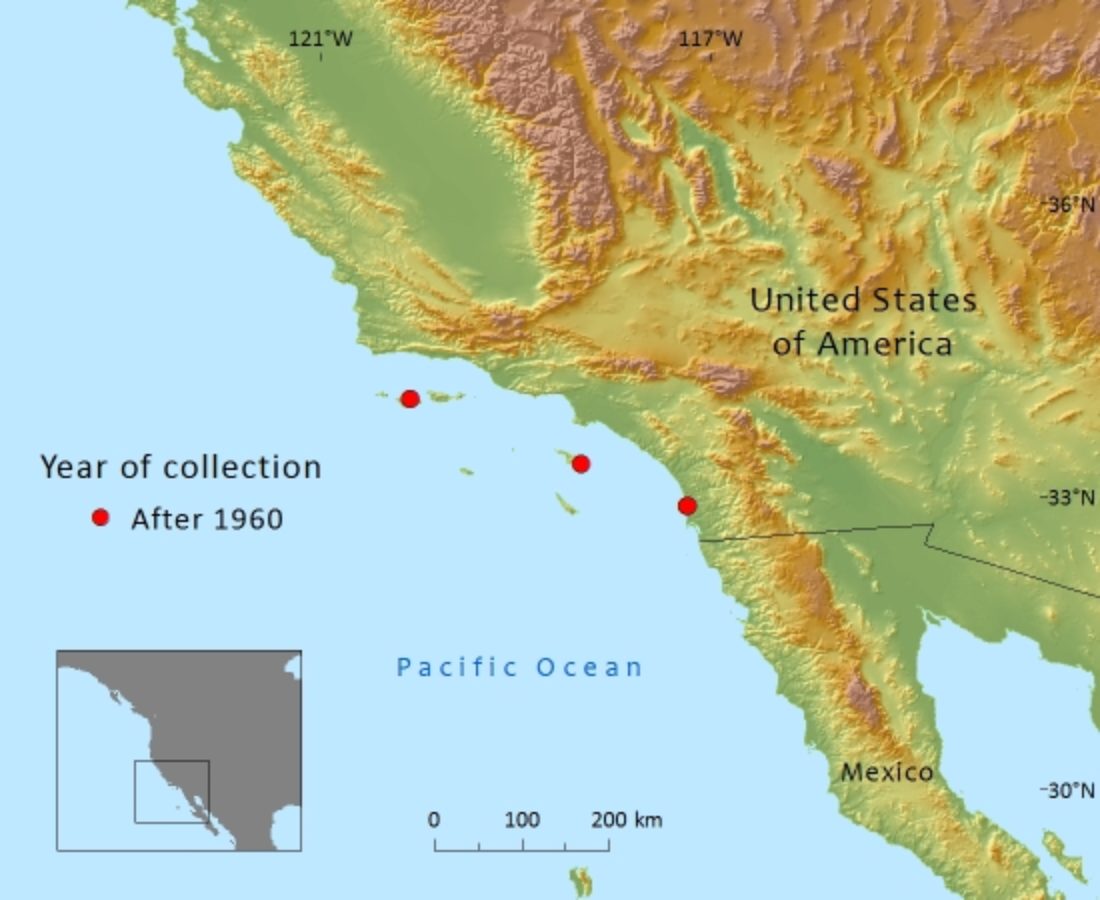Pinaceae
Pinus torreyana
Distributed in California, USA with two subspecies, one on the mainland and one on Santa Rosa Island. Both have very restricted distributions and small population sizes. On the mainland, outside of the main protected area of Torrey Pines State Park it is threatened by urbanisation.
Human Uses
Torrey pine is not used as a timber tree; at present the two disjunct populations are protected by law. It is in cultivation in California in gardens and some arboreta, but rare elsewhere. In the better growing conditions of gardens it can grow to a large tree; a specimen in New Zealand was 45 m tall with a girth of 1.5m in 1982 (Grimshaw & Bayton, 2009). Although its conservation seems more or less assured at present, growing this species more widely as an ex situ backup is to be recommended; it is also an interesting species to grow and requires a mild climate with warm, sunny summers and (near) absence of frost in winter.
References and further reading
- Farjon, A. (2013). Pinus torreyana. In: IUCN 2013. IUCN Red List of Threatened Species. Version 2013.1. <www.iucnredlist.org>. Downloaded on 13 July 2013.
- Griffin, J.R. & Critchfield, W.B. (1972). The distribution of forest trees in California. USDA Forest Service, Research Paper PSW-82 (reprinted with supplement, 1976). Pacific Southwest Forest and Range Experiment Station, Berkeley, CA.
- Haller, J.R. (1986). Taxonomy and relationships of the mainland and island populations of Pinus torreyana. Systematic Botany 11: 39-50.
- Hubbs, C. L., Whitaker, T. W. & Reid, F. M.H., Torrey Pines State Reserve, The Torrey Pines Association, 1991
- Lanner, R.M. (1999). Conifers of California. Cachuma Press, Los Olivos, California.
- Ledig, F.T. & Conkle, M.T. (1983). Gene diversity and genetic structure in a narrow endemic, Torrey pine. Evolution 37: 79-85.
- Waters, E.R. & Schaal, B.A.(1991). No variation is detected in the chloroplast genome of Pinus torreyana. Canadian Journal of Forest Research 21: 1832-1835.
